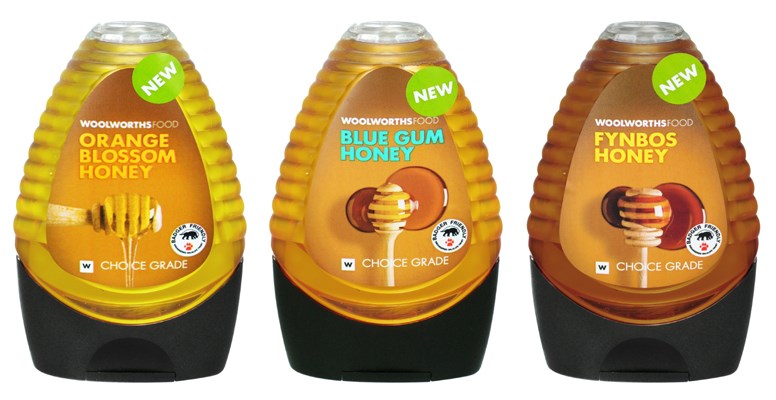
Top stories


EducationFrom adversity to opportunity: African education’s revival strategies
Sanjeev Mansotra 1 day



Marketing & MediaThe Odd Number named Financial Mail AdFocus Mid-Sized Agency of the Year
The Odd Number 2 days

More news











Product development perspectives
Consider the packaging manufacturing environment that consists of the consumer, the brand owner, filler and the raw material converter.
Whilst every brand prides itself on giving its customers what they ask for, this measure is not necessarily one of profit-leading product development. Here’s why: a brand owner and consumer will state a potential solution within their own frame of reference. A Harvard Business Review study by Anthony W. Ulwick, author and CEO of Strategyn, an international innovation consulting firm, states: “Customers only know what they have experienced. They cannot imagine what they don’t know about emergent technologies, new materials, and the like.” This ultimately results in developing packaging solutions that are confined to the current thinking of the brand owner and the consumer. For widely referenced market disruption, the development of solutions needs to be stretched horizontally, both backward and forward into the business chain, including the raw material suppliers, the converter, the brand owner and the end-user.
The Woolworths honey bottle is a good example of such local product development. Mpact developed the first inverted honey squeeze bottle for the South African retail market. Woolworths, the partner in this development, undertook to change the packaging for this product range from its aesthetically pleasing but non-functional cylindrical shape plastic bottle. The outcome was the new inverted, oval-ribbed bottle design that has proven to offer functional convenience to the consumer and brand presence benefit for the retailer. Mpact, as the manufacturer of this pack, applied technical design principles that surpassed the brand owners’ frame of reference and delivered a customer centric product packaging that offers benefits to all parties involved. This process merged the previously unmet need of the consumer with the capabilities of the converter, to deliver brand recognition for the retailer. The result is an easy-to-squeeze bottle that allows for maximum product consumption.


The redesign of the Glycol-Lemon shampoo range is another example of stretching product development horizontally by collaborating with both brand owner and consumer. The redesigned bottle delivered an aesthetically pleasing pack for the consumer and allows the full use of its content, whilst improved filling speed and increased print area maximises the brand presence on the shelf.



A Third example is the IML labelling technology. Since its introduction in South Africa approximately a decade ago, in mould labelling (IML) technology has been offering reduced lead times and lower cost, as the secondary label application process is eliminated. With a multitude of design options and textures, the end result is both aesthetically pleasing to the consumer and functionally beneficial for the brand owner. This innovation technology offered by Mpact provides the brand owner with the added benefit of its label stock being fully managed by their packaging partner.


Product development does however not stop at design or benefits to all parties involved. Development should also consider the environment. Mpact has launched its new rPET raw material, Savuka, in line with its values of commitment to sustainability.
Making use of recycled PET material such as Savuka rPET offers both the brand and consumer an opportunity to contribute to a greater cause and should be a strong consideration in any packaging development. Through initiatives such a Savuka, brands are given the opportunity to operate at a significant scale to ensure an increasingly and positive impact on the environment, by reducing landfill and CO2 emissions.
To successfully achieve profitability-based product development for all stakeholders one must understand the goals that underpin product development. Product development lies within the product itself, user benefits to consumers, financial benefits to brand owners and converters alike whilst considering a kind environmental element.
Mpact Plastics is a leading producer of rigid plastic packaging and cling film, producing a range of packaging and serving a multitude of blue-chip customers within various industries, including products for the food, beverage, personal care, homecare, pharmaceutical, agricultural, industrial and retail markets.
Contact: Mpact Plastics
Tel: 021 577 1200
az.oc.tcapm@ofni
www.mpact.co.za


Neelin joined Mpact as the managing director of Mpact Plastics on 1 November 2013.
Neelin was the CEO of MCG Industries and has over 30 years' experience in the packaging industry. He is a director of the Polyolefin Recycling Company
(Polyco).
He has an MBA (Herriot Watt University, United Kingdom), FCIS, FCMA.
Mpact Plastics is a leading producer of rigid plastic packaging and cling film in southern Africa. We operate out of nine production centres across the country, providing packaging from plants with relevant certifications. We service the food, beverage, personal care, home care, pharmaceutical, agricultural and retail markets. In upholding company values, and as a supporter of the circular economy, we positively contribute to industry associations, enabling various communities to participate in recycling solutions.